
Trusculpt flex vs Emsculpt Trusculpt Flex vs Emsculpt: Which Is the Better Non-Surgical Body Sculpting Treatment? Introduction Non-surgical body sculpting treatments like trusculpt flex and
0481 084 279
elitelookbyelena@gmail.com
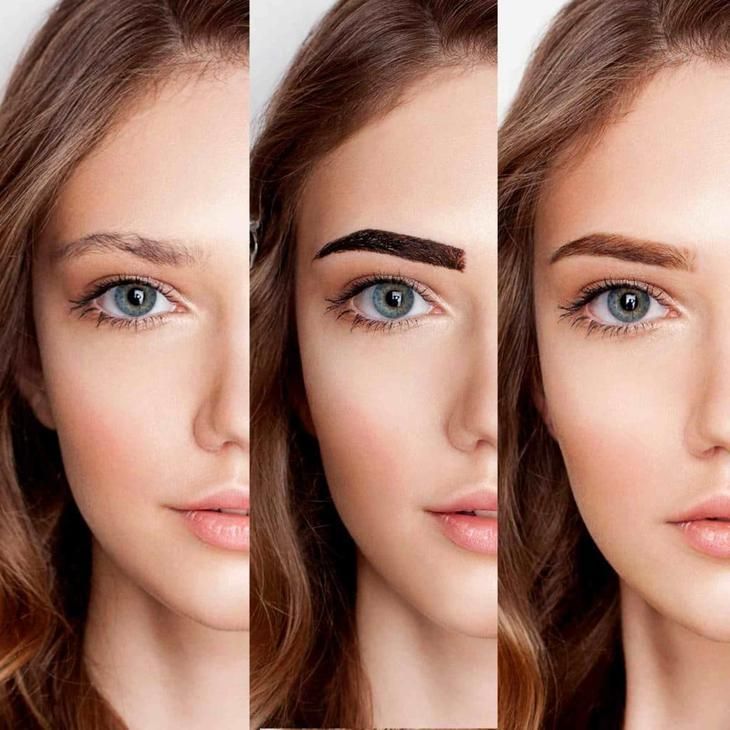
If you’re tired of filling in your eyebrows with pencils or powders every day, an eyebrow tattoo may be the solution for you. Eyebrow tattoos have become increasingly popular in recent years, and for good reason – they can save you time and money in the long run, and give you the perfectly shaped and filled-in eyebrows you desire. However, before getting an eyebrow tattoo, it’s important to understand the different types available and what each one entails. In this article, we’ll discuss the various types of eyebrow tattoos and their pros and cons.
Microblading is a popular form of eyebrow tattoo that involves using a small blade to create hair-like strokes that mimic natural eyebrow hairs. This technique is ideal for those with sparse or thin eyebrows who want a natural-looking result. Microblading can last for 1-3 years, depending on skin type and aftercare.
A powder eyebrow tattoo involves using a digital machine to create a shaded effect that looks like soft makeup. This technique is ideal for those who want a more defined and filled-in eyebrow look. Powder eyebrow tattoos can last for 2-5 years, depending on skin type and aftercare.
A combination eyebrow tattoo combines the techniques of microblading and powder brows to create a natural-looking result with more defined edges. This technique is ideal for those with sparse eyebrows who want a more filled-in and defined look. Combination eyebrow tattoos can last for 1-3 years, depending on skin type and aftercare.
A 3D eyebrow tattoo involves creating hair-like strokes using a digital machine to mimic the look of natural eyebrow hairs. This technique is ideal for those who want a natural-looking result with added depth and dimension. 3D eyebrow tattoos can last for 2-5 years, depending on skin type and aftercare.
An ombre eyebrow tattoo involves using a digital machine to create a gradual gradient effect that looks like soft makeup. This technique is ideal for those who want a more natural-looking and gradual transition from light to dark. Ombre eyebrow tattoos can last for 2-5 years, depending on skin type and aftercare.
Feathering eyebrow tattoos involve creating hair-like strokes using a digital machine to mimic the look of natural eyebrow hairs. This technique is ideal for those who want a natural-looking result with added texture and depth. Feathering eyebrow tattoos can last for 1-3 years, depending on skin type and aftercare.
Hair stroke eyebrow tattoos involve creating hair-like strokes using a digital machine to mimic the look of natural eyebrow hairs. This technique is ideal for those who want a natural-looking result with added definition and texture. Hair stroke eyebrow tattoos can last for 1-3 years, depending on skin type and aftercare.
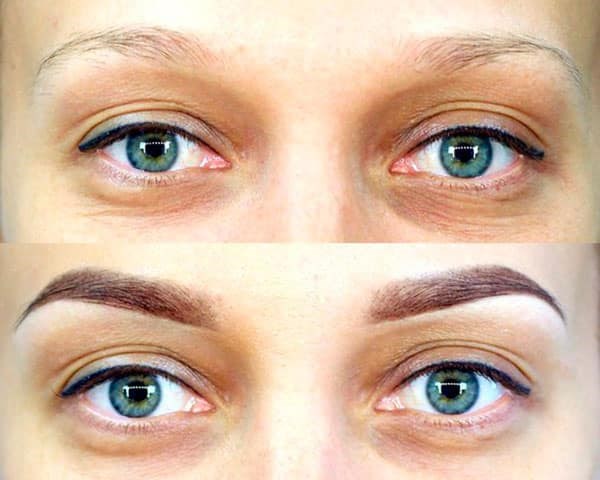
Block eyebrow tattoos involve using a digital machine to create a solid and defined shape for the eyebrows. This technique is ideal for
those who want a more dramatic and defined look, and is often used for fashion or editorial purposes. Block eyebrow tattoos can last for 2-5 years, depending on skin type and aftercare.
Soft tap eyebrow tattoos involve using a manual tool to deposit pigment into the skin, creating a softer and more natural-looking result. This technique is ideal for those with sensitive skin or those who want a more subtle eyebrow look. Soft tap eyebrow tattoos can last for 1-3 years, depending on skin type and aftercare.
Eyebrow tattoos have their pros and cons, just like any other cosmetic procedure. Some of the advantages of eyebrow tattoos include:
However, there are also some potential drawbacks to consider, such as:
It’s important to weigh these pros and cons and do your research before deciding if an eyebrow tattoo is right for you.
After getting an eyebrow tattoo, it’s important to take care of your skin and follow your artist’s aftercare instructions to ensure the best possible result. Some general aftercare tips include:
Eyebrow tattoos are a great option for those who want a more defined and filled-in eyebrow look without the hassle of daily makeup application. However, it’s important to understand the different types available and their pros and cons before deciding on a technique. With proper research and aftercare, an eyebrow tattoo can be a great investment in your beauty routine.
Eyebrows are a defining feature of the face, and many people go to great lengths to achieve the perfect arch, shape, and density. Two of the most popular methods of achieving fuller, more defined eyebrows are microblading and powder eyebrow tattooing. While both techniques involve depositing pigment into the skin, there are key differences in the way they are performed, the results they produce, and the aftercare required. In this article, we will explore the pros and cons of microblading and powder eyebrow tattooing, and help you decide which technique is best suited to your needs.
Microblading and powder eyebrow tattooing are both semi-permanent cosmetic tattooing techniques that can help enhance and reshape your eyebrows. They involve depositing pigment into the skin using a small handheld tool or a tattoo machine. The goal is to create a natural-looking eyebrow that complements your face shape and features.
While both techniques may seem similar, they differ in the way they are performed and the results they produce. Microblading creates hair-like strokes that mimic natural brow hairs, while powder eyebrow tattooing produces a soft, powdery effect that resembles the look of makeup.
Microblading is a form of cosmetic tattooing that involves using a handheld tool to deposit pigment into the skin. The tool, which consists of tiny needles arranged in a row, is dipped into the pigment and then used to create small, hair-like strokes that mimic the look of natural eyebrow hairs. Microblading can be used to enhance the shape, fullness, and definition of the eyebrows.
Microblading is typically performed in two sessions, spaced four to six weeks apart. During the first session, the brow artist will consult with you to determine the shape and style of the brows you want. They will then use a pencil to draw the shape onto your skin, taking into account your natural brow shape and bone structure.
Once the shape has been agreed upon, the artist will apply a topical numbing cream to minimize any discomfort during the procedure. They will then use the microblading tool to create small, hair-like strokes, using a different pigment shade to create depth and dimension.
After the first session, the eyebrows may appear darker and bolder than desired. This is because the pigment will fade over time as the skin heals. During the second session, the artist will touch up any areas that have faded or need adjusting to ensure a natural-looking result.
Microblading typically lasts for 12-18 months, depending on your skin type, lifestyle, and aftercare routine. The pigment will gradually fade over time as the skin sheds and regenerates. To maintain the appearance of your eyebrows, it is recommended that
Powder eyebrow tattooing, also known as ombre brows, is a cosmetic tattooing technique that uses a tattoo machine to deposit pigment into the skin in a soft, powdery pattern. The technique creates a look similar to that of makeup, with a gradient effect that is darker at the tail and lighter towards the front of the brow. Powder eyebrow tattooing is a popular choice for those who prefer a more filled-in, defined brow.
Powder eyebrow tattooing is typically done in a single session and begins with a consultation to determine the shape and style of the brows. The tattoo artist will then use a pencil to draw the shape onto your skin, taking into account your natural brow shape and bone structure.
Once the shape has been agreed upon, the artist will use a tattoo machine to deposit pigment into the skin in a soft, powdered pattern. The technique creates a gradient effect that is darker at the tail and lighter towards the front of the brow, resulting in a natural-looking result.
Powder eyebrow tattooing typically lasts for 2-3 years, depending on your skin type, lifestyle, and aftercare routine. Over time, the pigment may fade or change color, requiring touch-ups to maintain the appearance of your eyebrows.
Both microblading and powder eyebrow tattooing have their pros and cons. Here are some of the main ones to consider:
Choosing between microblading and powder eyebrow tattooing ultimately comes down to personal preference and what will work best for your skin type, lifestyle, and desired result. If you are looking for a natural-looking brow with hair-like strokes, microblading may be the best option for you. If you prefer a more filled-in, defined brow that resembles the look of makeup, powder eyebrow tattooing may be the way to go.
It is important to consult with a trained and experienced brow artist to discuss your options and determine which technique will best suit your needs.
Proper aftercare is essential to ensure the best results from microblading and powder eyebrow tattooing. Here are some tips to help you care for your newly tattooed eyebrows:
Choosing between microblading and powder eyebrow tattooing can be a difficult decision, but understanding the differences between the two techniques can help you make an informed choice. Both techniques have their pros and cons, and what works best for you will depend on your personal preferences and desired results. It is important to do your research, consult with a trained and experienced brow artist, and follow proper aftercare instructions to ensure the best results.
Is microblading or powder eyebrow tattooing more painful?
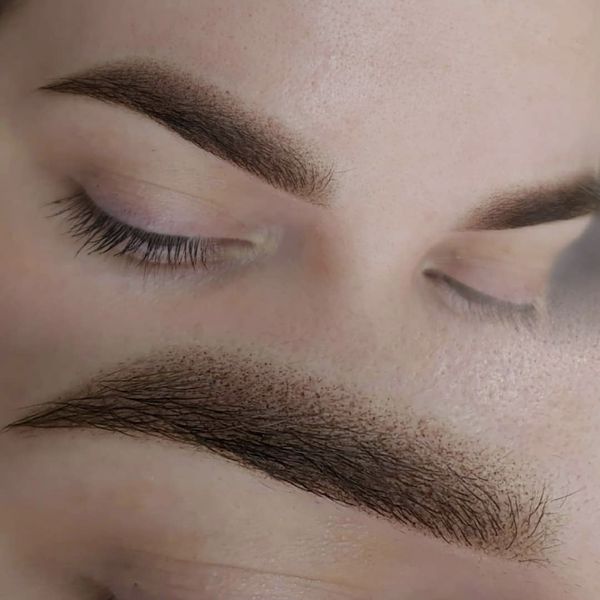
Eyebrow tattoos have become increasingly popular in recent years, with many people seeking to achieve the perfect, long-lasting brow look. However, not all eyebrow tattoos are created equal. Microblading, in particular, has gained a lot of attention for its supposed convenience and natural look, but it comes with many downsides. In this article, we will explore why microblading is the worst type of eyebrow tattoo, and why you should consider other options.
Eyebrow tattoos are a popular beauty treatment that promises to deliver a long-lasting, flawless brow look. With various techniques available, it’s important to know the downsides of each before deciding which one is right for you. In this article, we will delve into the details of microblading, one of the most talked-about eyebrow tattoo techniques, and why it’s considered the worst type of brow tattoo.
Microblading is a technique where a trained technician uses a handheld tool to make small, hair-like strokes on the skin to create the illusion of fuller, natural-looking eyebrows. The process involves making small incisions in the skin and depositing pigment in the cuts to create the desired brow shape. The procedure takes around 2-3 hours and the results can last up to 2 years.
While microblading has become a trendy option for brow tattoos, it is not without its drawbacks. Here are some reasons why microblading is the worst type of eyebrow tattoo:
Painful and Uncomfortable
Microblading is a painful and uncomfortable procedure as it involves making small incisions in the skin. Many people experience discomfort and pain during the procedure, which can make the process unbearable for some. Additionally, the healing process can be uncomfortable, with swelling, redness, and scabbing being common side effects.
Short-Term Results
Despite the high cost of the procedure, the results of microblading are short-term. The pigment fades over time, with many people needing touch-ups every 6-12 months to maintain the desired look. This can quickly become a financial burden for those seeking a long-term solution to eyebrow maintenance.
Poorly Trained Technicians
As microblading has gained popularity, there has been a rise in untrained technicians offering the service. Many people have suffered from poor results, botched procedures, and even infections due to poorly trained technicians. It’s important to research the technician’s credentials and experience before booking a microblading appointment.
Infection Risk
Microblading involves making small incisions in the skin, which increases the risk of infection. If the technician is not trained properly, they may not follow proper sanitation protocols, leading to an increased risk of infections. Additionally, if the aftercare instructions are not followed correctly, it can lead to infection, scarring, and poor results.
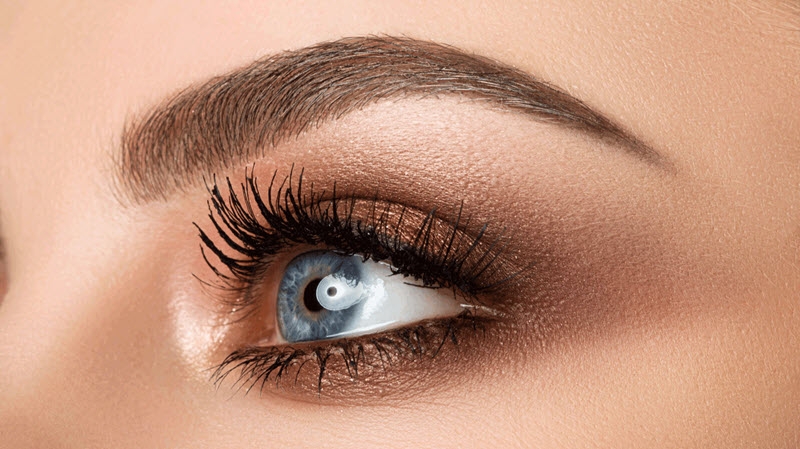
While microblading may seem like a convenient option, there are other eyebrow tattoo techniques available that offer better, longer lasting results without the downsides of microblading. Here are some alternative options to consider:
Powder brows involve using a shading technique to create a soft, powdery effect that mimics the look of filled-in brows. Unlike microblading, powder brows do not involve making incisions in the skin, making it a less painful procedure. The results are long-lasting, with touch-ups only needed every 1-2 years.
Ombré brows involve using a shading technique to create a gradient effect that looks natural and subtle. Like powder brows, ombré brows do not involve making incisions in the skin, making it a less painful option. The results are long-lasting, with touch-ups only needed every 1-2 years.
Combination brows involve combining the techniques of microblading and shading to create a natural, textured brow look. This technique is ideal for those with sparse or thin eyebrows and can provide long-lasting results without the downsides of microblading.
While microblading may seem like a convenient and natural-looking option for eyebrow tattoos, it comes with many downsides. From the pain and discomfort of the procedure to the short-term results and the risk of infection, microblading is not the best choice for those seeking a long-lasting, low-risk solution to eyebrow maintenance. Consider alternative options like powder brows, ombré brows, or combination brows to achieve the desired look without the drawbacks of microblading.
Is microblading painful? Yes, microblading involves making small incisions in the skin, which can be painful and uncomfortable during the procedure and the healing process.
How long do microblading results last? Microblading results can last up to 2 years, but touch-ups are needed every 6-12 months to maintain the desired look.
Can I get an infection from microblading? Yes, if the technician is not trained properly or if the aftercare instructions are not followed correctly, it can lead to infection, scarring, and poor results.
What are the alternative options to microblading? Alternative options to microblading include powder brows, ombré brows, and combination brows.
Which eyebrow tattoo technique is the best? The best eyebrow tattoo technique depends on individual preferences and needs. Consider factors like pain tolerance, desired look, and long-term maintenance before deciding on a technique.
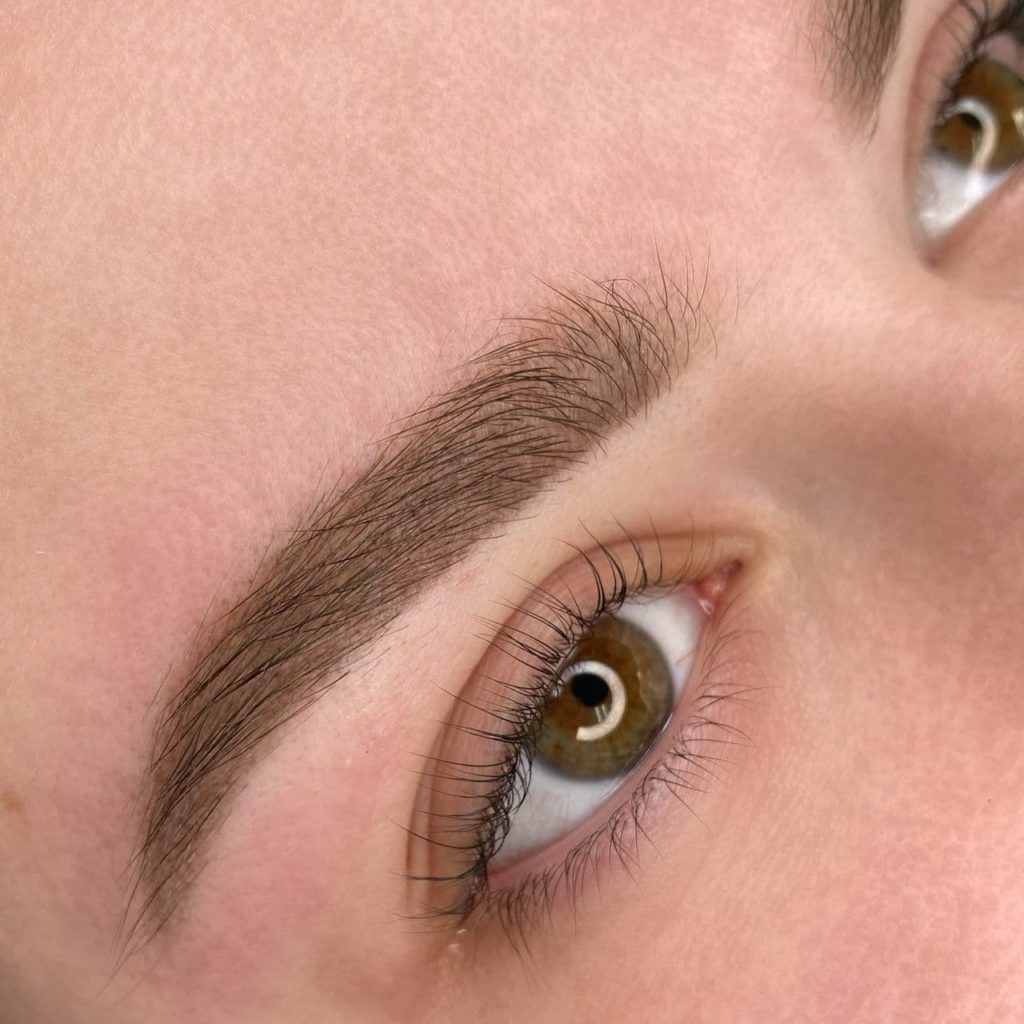
In the world of beauty and cosmetic tattoo, people are constantly seeking new ways to enhance their appearance. One trend that has been gaining popularity in recent years is eyebrow enhancements. Microblading has been the go-to procedure for a while, but there’s a new kid on the block – powder brows. In this article, we’ll delve into the world of eyebrows and explore why powder brows are a better alternative to microblading.
The eyebrows play a crucial role in framing our face, and the trend of enhancing them is not going away anytime soon. Microblading was once the go-to procedure for a more defined look, but it is slowly being replaced by powder brows. In this article, we’ll explore the differences between these two eyebrow enhancement procedures and why powder brows are a better alternative.
Microblading is a semi-permanent eyebrow enhancement procedure where pigment is inserted into the skin using a handheld tool with a microblade. The microblade creates thin, hair-like strokes to mimic the natural look of eyebrows. Microblading has been popular for years because of its ability to create a natural-looking brow.
Powder brows, also known as ombre brows, is a semi-permanent eyebrow enhancement procedure where pigment is inserted into the skin using a rotary machine to create a soft, powdery effect. The result is a more defined and polished look.
The main difference between powder brows and microblading is the technique used to create the look. Microblading involves using a handheld tool with a microblade to create thin, hair-like strokes. Powder brows, on the other hand, uses a rotary machine to create a soft, powdery effect. The result of powder brows is a more defined and polished look, while microblading creates a more natural-looking brow.
The Procedure
The procedure for powder brows and microblading is similar, with the main difference being the tool used to create the look. Both procedures involve numbing the area before pigment is inserted into the skin. However, powder brows take longer to complete because the rotary machine used to create the look is slower than the microblade.
Results
The results of powder brows and microblading differ in appearance. Microblading creates a more natural-looking brow, while powder brows create a more defined and polished look. Powder brows are ideal for people who want a more defined and filled-in brow, while microblading is ideal for those who want a more natural-looking brow.
Safety
Both powder brows and microblading are safe procedures when done by a licensed and trained professional. However, it’s important to note that any procedure involving the skin carries risks. It’s essential to choose a reputable technician and ensure that all safety measures are taken during the procedure.
Aftercare
Proper aftercare is essential for both powder brows and microblading. After the procedure, it’s important to keep the area clean and dry. It’s also essential to avoid direct sunlight, swimming, and saunas. Follow-up appointments are also required to maintain the longevity of the results.
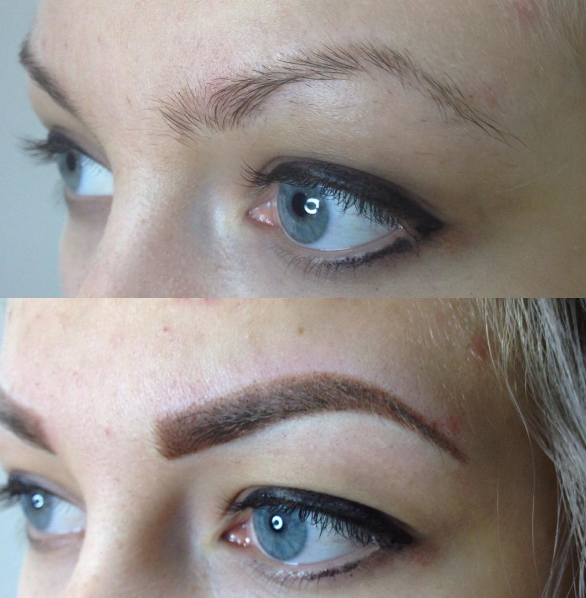
Longevity
The longevity of powder brows and microblading also differs. Powder brows typically last longer than microblading because the pigment is inserted deeper into the skin, creating a more permanent effect. Powder brows can last up to two years, while microblading typically lasts up to one year.
Cost
The cost of powder brows and microblading varies depending on the location and the technician. However, in general, powder brows tend to be more expensive than microblading. This is because powder brows require more time to complete and the equipment used is more expensive.
In conclusion, powder brows are a better alternative to microblading for those who want a more defined and polished look. While microblading creates a more natural-looking brow, powder brows create a more defined and filled-in look. Powder brows are also more long-lasting than microblading and require less frequent touch-ups. However, it’s important to choose a reputable technician and follow proper aftercare for both procedures.
Is powder brow more painful than microblading? The level of pain may differ depending on the individual, but both procedures involve numbing the area before the pigment is inserted, so the pain should be minimal.
Can I wear makeup after getting powder brows or microblading? It’s best to avoid wearing makeup on the treated area for at least a week after the procedure to allow it to heal properly.
Can I get my eyebrows wet after getting powder brows or microblading? It’s essential to avoid getting the treated area wet for at least a week after the procedure to prevent any infections or damage to the pigment.
How often do I need to get touch-ups for powder brows or microblading? Powder brows typically last up to two years, while microblading lasts up to one year. Touch-ups are required to maintain the longevity of the results.
Are there any risks involved in getting powder brows or microblading? Any procedure involving the skin carries risks. It’s essential to choose a reputable technician and ensure that all safety measures are taken during the procedure to minimise any risks.
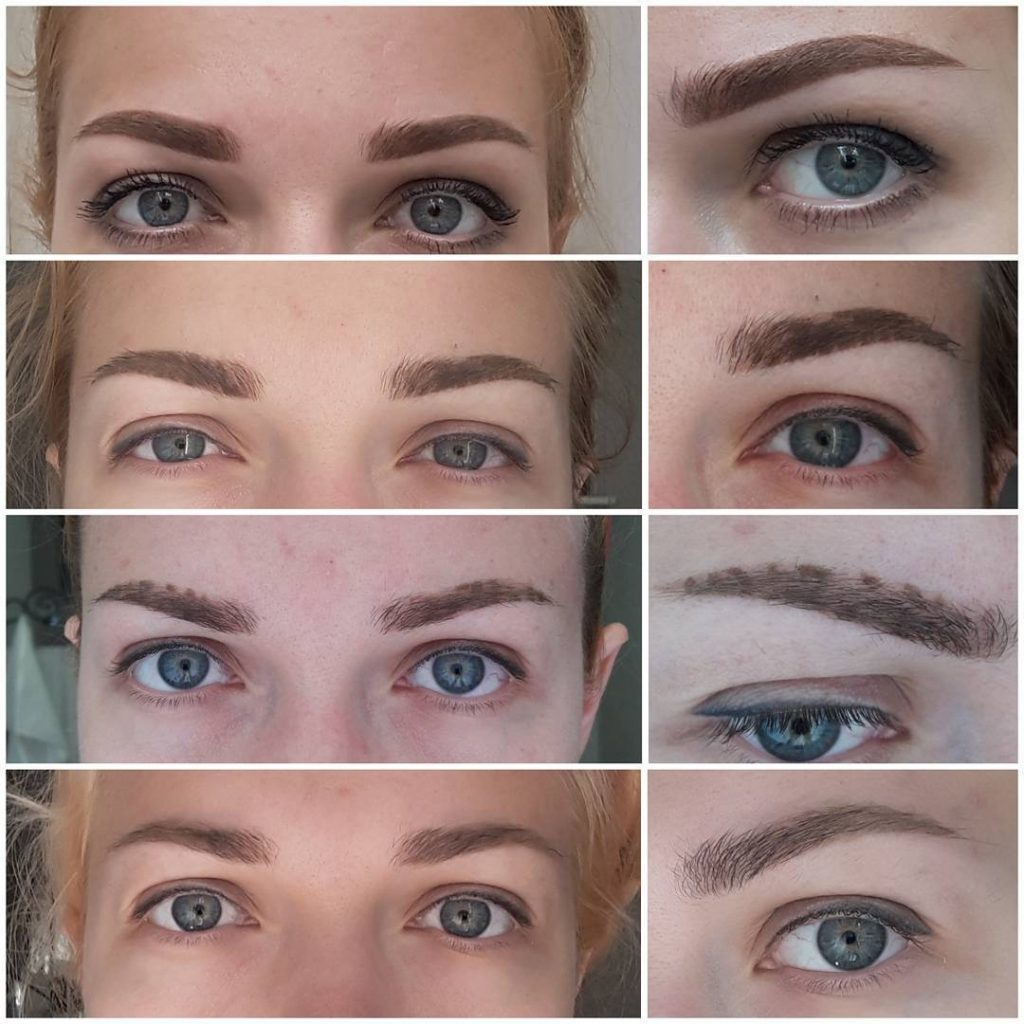
Powder brows, also known as ombre brows, are a type of semi-permanent makeup that can last anywhere from 1-3 years depending on a variety of factors such as skin type, aftercare, and individual lifestyle habits. The pigments used in powder brows are designed to fade over time and gradually lighten, which is why touch-ups are recommended every 12-18 months. It is important to note that the longevity of powder brows may vary from person to person, and some may experience faster fading due to factors such as sun exposure or excessive sweating.
Powder brows are a type of semi-permanent makeup technique that creates a soft, powdered look on the eyebrows. Unlike microblading, which uses a handheld tool to create hair-like strokes, powder brows use a cosmetic tattoo machine to create a more natural-looking gradient effect. The technique involves depositing small dots of pigment into the skin, gradually building up the color and shape of the eyebrows. The result is a soft, subtle, and natural-looking brow that requires less maintenance than traditional makeup.
Whether powder brows are better than microblading is subjective and depends on personal preference. Powder brows are ideal for those who want a soft and natural-looking eyebrow without the need for daily maintenance, while microblading is better suited for those who want a more defined and precise look. Powder brows also tend to last longer than microblading, but they may require more touch-ups to maintain the desired shape and color.
As with any cosmetic procedure, there are some cons associated with powder brows. Some people may experience discomfort during the procedure, although a numbing cream can be applied to minimize any pain. Additionally, some people may experience minor swelling or redness in the treated area, which should subside within a few hours. There is also a risk of infection if proper aftercare instructions are not followed. Another potential con of powder brows is that they are semi-permanent and will fade over time, which means that touch-ups are necessary to maintain the desired look.
When done by a skilled and experienced technician, powder brows should not look fake. The technique is designed to create a soft, natural-looking gradient effect that mimics the appearance of real eyebrows. The pigment used in powder brows is also specifically formulated to match the individual’s natural hair color and skin tone, which helps to create a more realistic look. However, if the technician uses too much pigment or does not blend it properly, the result can appear unnatural.
After 2 years, powder brows will have faded significantly, and the color may have changed slightly. The amount of fading will depend on factors such as skin type, sun exposure, and individual lifestyle habits. It is normal for powder brows to fade gradually over time, which is why touch-ups are recommended every 12-18 months to maintain the desired shape and color.
The level of pain associated with powder brows varies from person to person. Some people may experience discomfort during the procedure, while others may feel little to no pain at all. A numbing cream can be applied before the procedure to minimize any pain or discomfort.
As with any cosmetic procedure, there is a risk that powder brows can go wrong if they are not done by a skilled and experienced technician. Common issues that can arise include an uneven shape, an unnatural color, or pigment that is too dark or too light. However, these issues can usually be corrected with touch-ups or corrective procedures.
Who is a good candidate for powder brows?
Powder brows are a suitable option for many people. Candidates who have thin, sparse, or uneven eyebrows are perfect for powder brows. Additionally, individuals who want to save time on their daily makeup routine are also excellent candidates. Powder brows are especially suitable for people who have sensitive skin, as they involve less trauma to the skin and fewer chances of complications. Candidates who have had previous eyebrow tattoos or microblading but are not happy with the results are also good candidates for powder brows. People who engage in activities such as sports or swimming, which can cause makeup to smudge or come off, may also benefit from powder brows. However, people with very oily skin or those with active acne may not be suitable for powder brows, as the pigment may not hold as well in these cases. It is essential to consult with a qualified and experienced technician to determine if you are a good candidate for powder brows.
There are some possible downsides to powder brows that potential clients should consider before making the decision. One of the cons of powder brows is that they are a semi-permanent makeup technique, meaning that they will eventually fade over time. However, they typically last longer than microblading, with most clients enjoying results for 2-3 years before needing a touch-up.
Another potential downside is that the initial healing process can take up to two weeks, during which the pigment may appear darker and more intense than the desired result. Additionally, the scabbing and flaking during healing may cause temporary discomfort or itchiness.
Powder brows are also not recommended for people with oily skin or those who are prone to keloids, as the pigments may not adhere well and could result in an uneven or patchy appearance. In some cases, the pigments may also migrate or appear bluish or greyish over time.
It is important to note that the final results of powder brows depend on the skill of the artist and the quality of the pigments used. If not done correctly, they can look unnatural or “fake.” It is crucial to do thorough research on the artist and their portfolio before committing to the procedure.
Overall, while there are some potential downsides to consider, many people find powder brows to be a great alternative to microblading, as they offer longer-lasting and more natural-looking results.
After two years, powder brows may start to fade and lose some of their intensity. However, the extent to which they fade can vary depending on factors such as skin type, sun exposure, and skincare routine. Some clients may find that they need a touch-up after a year or two, while others may not need one for three or more years.
It is worth noting that the fading process for powder brows is typically more gradual and natural-looking than with microblading, which can sometimes result in a patchy or “spotty” appearance as the strokes fade unevenly. With powder brows, the fading is more even and subtle, creating a soft, powdered effect that still looks natural.
In terms of pain, the procedure itself is usually not very painful, as a numbing cream is applied beforehand. However, some clients may experience some discomfort or sensitivity during the healing process as the skin recovers and forms scabs. It is important to follow the aftercare instructions provided by the artist to minimize any potential discomfort and ensure optimal healing.
Powder brows are generally considered safe and effective when done by a skilled and experienced artist using high-quality pigments. However, as with any cosmetic procedure, there is always a risk of complications, such as infection or allergic reaction. It is important to choose a reputable artist and follow all aftercare instructions carefully to minimize any potential risks.
As for candidacy, most people are good candidates for powder brows, as the technique is suitable for a wide range of skin types and tones. However, those with very oily skin, extremely thin or sparse eyebrows, or a history of allergic reactions may not be good candidates. It is best to consult with an experienced artist to determine whether powder brows are right for you.
Overall, powder brows can be a great way to enhance the appearance of your eyebrows and achieve a natural-looking, long-lasting result. While they may not be the right choice for everyone, many people find that they are a great alternative to microblading and other eyebrow enhancement techniques.
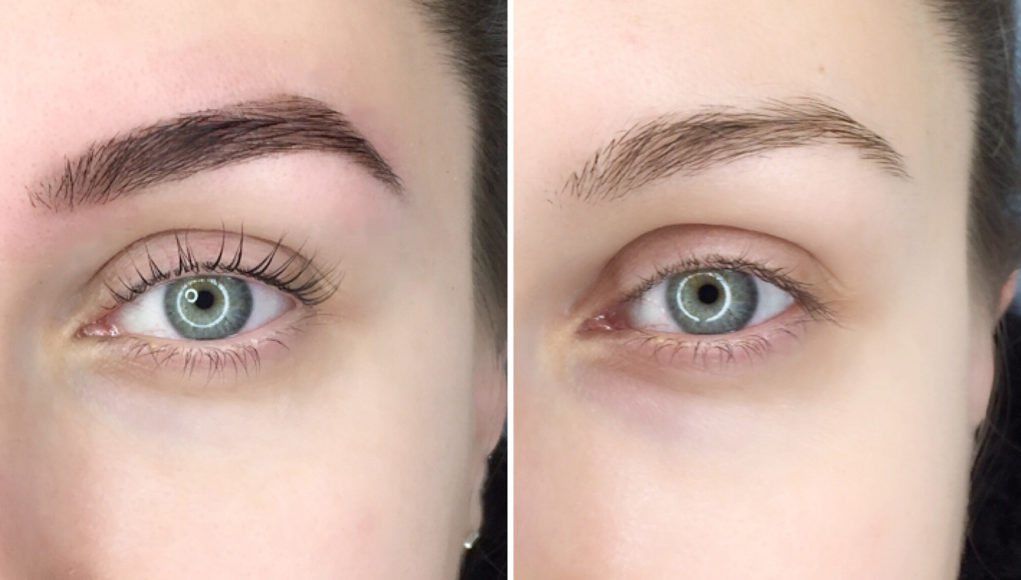
Do powder brows make you look younger? Powder brows can give the appearance of fuller, more defined eyebrows which can help to frame the face and draw attention to the eyes. By creating a more youthful and fresh look, powder brows can give the impression of a more rested, rejuvenated appearance. However, the extent to which powder brows make someone look younger can vary depending on individual factors such as skin type and age.
Are powder brows a tattoo? Powder brows are a form of semi-permanent makeup that involves depositing pigment into the upper layer of the skin using a machine with a fine needle. While the technique is similar to traditional tattooing, the pigment used in powder brows is typically less concentrated and applied differently to create a softer, more natural look. Powder brows can last up to 2-3 years before fading, but will gradually fade over time due to the natural turnover of skin cells.
Is powder brows done with a needle? Yes, powder brows are done with a machine that uses a fine needle to deposit pigment into the upper layer of the skin. The needle creates tiny punctures in the skin, allowing the pigment to be deposited into the skin to create the desired effect. The needle used in powder brows is typically smaller than those used in traditional tattooing, which allows for more precise application of the pigment.
Can you shower with powder brows? Yes, you can shower with powder brows, but it is important to avoid getting the area wet for the first 24-48 hours after the procedure to allow the pigment to properly set. After this initial period, you can gently clean the area with a mild cleanser and water, being careful not to scrub or rub the area. It is also important to avoid exposing the area to excessive moisture, such as swimming or sweating heavily, for the first few weeks after the procedure to prevent the pigment from fading prematurely.
Do they shave your eyebrows for powder brows?
No, they do not shave your eyebrows for powder brows. The procedure involves filling in the natural brow shape with small dots of pigment to create a soft, powdered effect. It is a semi-permanent makeup technique, which means that the pigment will gradually fade over time. Shaving the eyebrows is not necessary for this procedure since the existing brow hair is used as a guide for the technician. However, if there are stray hairs or hairs that need to be removed to achieve the desired shape, the technician will pluck or trim them before starting the procedure.
Are powder brows cheaper than microblading?
Powder brows are generally less expensive than microblading. While prices can vary depending on the location and the experience of the technician, powder brows are typically priced between $300 and $500, whereas microblading can cost anywhere from $500 to $1,500. The reason for the price difference is that microblading is a more intricate and time-consuming procedure that involves creating individual hair-like strokes in the skin, whereas powder brows involve filling in the brow area with small dots of pigment. Additionally, microblading typically requires more frequent touch-ups than powder brows, which can add to the overall cost.
How many times can you get powder brows?
Powder brows are a semi-permanent makeup technique, which means that the pigment will gradually fade over time. The longevity of powder brows varies from person to person and can depend on factors such as skin type, sun exposure, and lifestyle. On average, powder brows can last anywhere from 1 to 3 years before needing a touch-up. However, it is possible to get powder brows more than once if you wish to maintain the look. It is recommended to wait at least 6 weeks before getting a touch-up to allow the skin to fully heal.
Is 60 too old for permanent makeup?
No, age is not a barrier to getting permanent makeup, including powder brows. In fact, many older individuals choose to get permanent makeup to enhance their natural features and save time on their daily makeup routine. However, it is important to consult with a qualified technician before getting any permanent makeup procedure to ensure that it is safe and appropriate for your skin type and overall health.
Is powder brow worth it?
Whether or not powder brows are worth it depends on individual preferences and goals. Powder brows can enhance the natural shape and fullness of the brows, save time on daily makeup routine, and create a more defined and polished look. However, they are a semi-permanent procedure that requires some maintenance and touch-ups to maintain the desired look. It is important to research and consult with a qualified technician before getting any permanent makeup procedure to ensure that it is safe, appropriate, and meets your expectations.
Can you sleep on powder brows?
It is generally recommended to avoid sleeping on your face or rubbing the brow area for at least the first week after getting powder brows. This is because the pigment is still settling into the skin and any pressure or friction can disrupt the healing process and affect the final result. After the initial healing period, it is generally safe to sleep on your powder brows as long as you avoid rubbing or pressing on the area. It is important to follow the aftercare instructions provided by your technician to ensure the best possible outcome.
What happens if you don’t touch up powder brows?
Powder brows are considered semi-permanent makeup, and as with any semi-permanent makeup, touch-ups are necessary to maintain the desired look. If you do not touch up your powder brows, they will gradually fade over time, and the color will become less intense. The fading process can vary from person to person, depending on their skin type and how well they take care of their brows.
Are powder brows itchy?
It is normal to experience some itching and scabbing after getting powder brows. However, excessive itching could indicate an allergic reaction or an infection. If you experience intense itching or notice any signs of infection, such as swelling, redness, or discharge, you should contact your technician or a medical professional immediately.
How long does it take the scabs to fall off after powder brows?
Scabbing is a natural part of the healing process after getting powder brows. The scabs typically start to form a few days after the procedure and can take around 7-10 days to fully fall off. It is important not to pick or scratch the scabs, as this can lead to scarring and pigment loss.
Do powder brows turn pink?
It is rare for powder brows to turn pink, but it can happen if the pigment used has a red or pink undertone. This is why it is crucial to choose a skilled and experienced technician who uses high-quality pigments to avoid any unwanted color changes. If you notice any unusual color changes in your powder brows, you should contact your technician to discuss the best course of action.
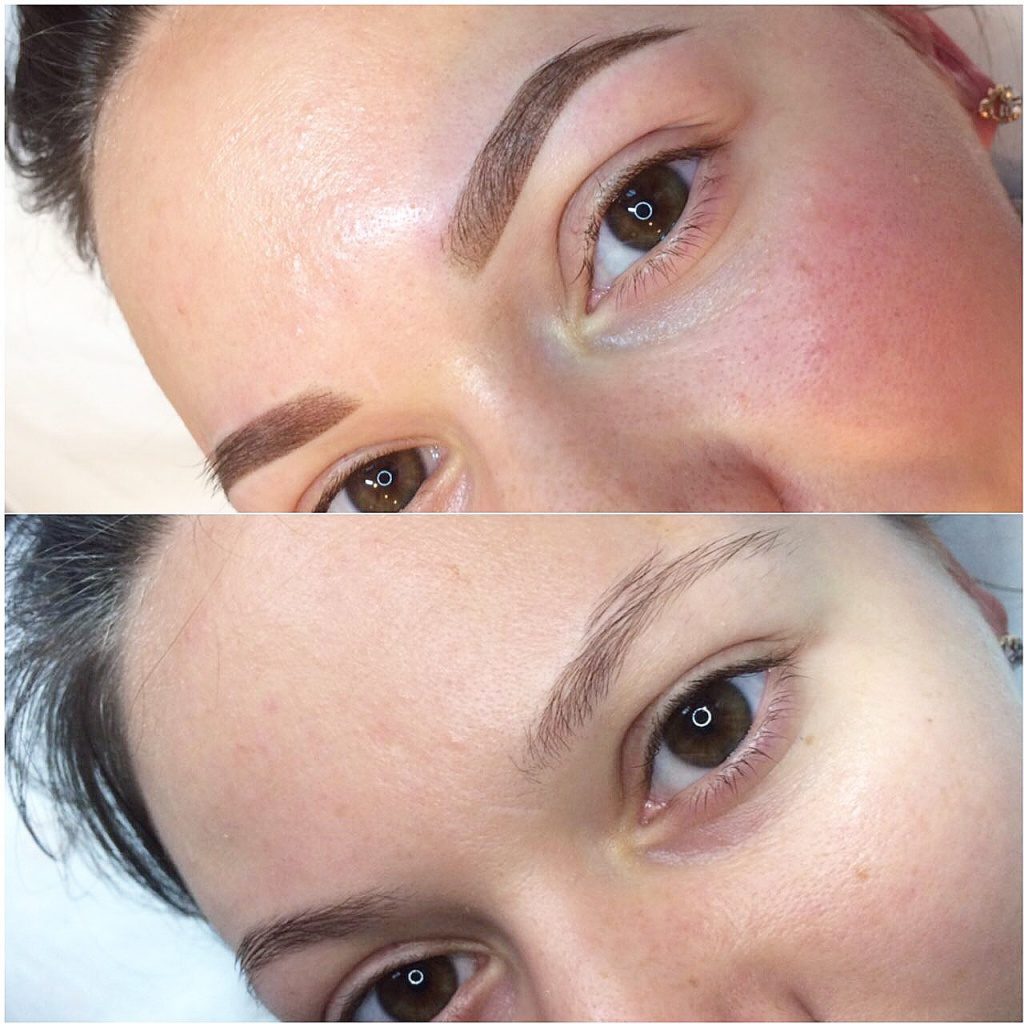

Trusculpt flex vs Emsculpt Trusculpt Flex vs Emsculpt: Which Is the Better Non-Surgical Body Sculpting Treatment? Introduction Non-surgical body sculpting treatments like trusculpt flex and

Emsculpt NEO vs Renasculpt Sculpt Your Body with Emsculpt NEO and Renasculpt Have you been working out and eating healthy, but still unhappy with stubborn
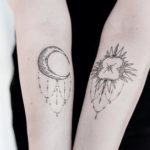
Fine line tattoos in Perth What Are Fine Line Tattoos and Why Get One Fine line tattoos, also known as single needle tattoos, are delicate
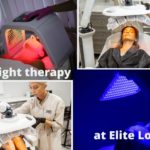
Led light therapy benefits What is LED Light Therapy and How Does it Work? LED light therapy is a skincare technique that utilizes different wavelengths
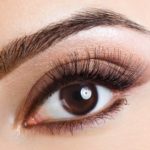
A guide to eyeliner tattoo in Perth Perfectly Defined Eyes: A Guide to Eyeliner Tattoos in Perth Eyeliner tattoos, also known as permanent or semi-permanent
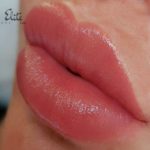
Should I Get Lip Blush Tattoo Before or After Fillers? Can You Get a Lip Tattoo After Lip Fillers? Lip fillers help add volume and
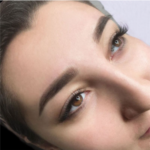
Eyebrow tattoo in Perth from Elite Look Overview of eyebrow tattoos in Perth Eyebrow tattoos, also known as eyebrow embroidery, microblading, or permanent makeup, have
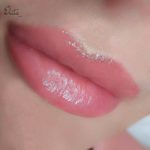
Lip Blush Tattoo Questions Answered What is lip blush tattoo? Lip blush tattoo, also known as lip blushing or lip tinting, is a cosmetic tattooing

Elite Look cosmetic tattoos in Perth. Elena is a cosmetic specialist and tattooist and in Perth who specialises in the art of creating beautifully natural tattooed lips, brows and eyeliner. Her focus is always on offering clients the best and natural-looking solutions and provide the top quality services to satisfy their lifestyle needs, and physical challenges.